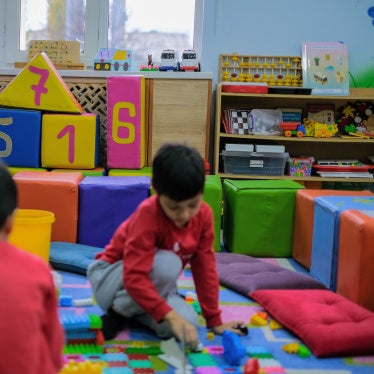California hit a milestone this month with the first release under new laws of a man sentenced as a teenager to life without parole. Edel Gonzalez was 16 at the time of his crime and spent nearly 24 years in prison.
California’s new laws recognize that juveniles are different from adults. We know that a 16-year-old has tremendous capacity to grow and change, and not be defined by his or her worst act. These laws allowed Edel to express his deep remorse for a murder and prove over many years that he had grown far beyond the immature teen who took part in that crime.
But these laws are back-door fixes to a front-door problem. The real problem is the flow of young people into adult prison for life and near-life sentences.
California law allows those as young as 14 to be tried and sentenced as adults. One might think that the decision to remove a youth from the juvenile justice system would always be made by a judge who carefully considers the severity of the offense, as well as the potential for rehabilitation.
In fact, a judge does not make the decision in most cases. Instead, for most youths who end up in adult court, it was a prosecutor who decided, with no hearing or judicial consideration. And prosecutors typically have to decide quickly, without access to or the ability to collect essential information about the youth.
The 2000 law, which was passed without the benefit of recent research about what works to turn youths around, has had devastating results. Since 2003, nearly 10,000 youths under 18 have been sent to the adult system. It has been incredibly costly, adding to state debt and schooling a generation of teenagers in prison culture.
Not that long ago, I walked the long, gloom-filled halls of a prison to speak to men who had been between 14 and 17 at the time of their crimes. I pressed close to the cell doors so I could talk through tiny windows to the men whose faces were still rounded by youthfulness.
Despite the setting, one 21-year-old inmate somehow exuded potential and optimism. “I’m taking college classes,” he said, marking him as among the fortunate and few who have access to such programs. He made other important choices to turn his life around.
But will his enthusiasm last? He won’t get out for 17 more years. What will happen to him during those years?
The decision to send a young person to the adult justice system has far-reaching consequences. While juvenile court is focused on what works for young people and is intent on rehabilitation and offering services and programs, in the adult system the odds of getting any educational or vocational programs are remote. Extensive, well-regarded research has shown that youths tried as adults are more likely to commit new crimes compared with those tried in the juvenile system.
It’s nearly impossible to avoid violence in adult prisons. One inmate, 17 at the time of his crime, wrote to me that he could have been gaining education and vocational skills in the juvenile system, but “instead, I had to focus on surviving and staying alive.”
Some do manage to avoid being irreparably harmed by prison. Some get into a program, even a college course, or find a way to turn their lives around. Some youths sentenced to adult terms will become successful people despite years, even decades, in prison. Eventually, under California’s new laws, they may even be able to find a way out of prison.
But even for those who survive and succeed, a question we should ask is: What did we lose? What if they got treatment, education and skills to make it more likely that they will succeed, without a long, costly prison term? We know this is what works with youths.
It is time for California to stop sending so many young people to the adult criminal system.
Elizabeth Calvin is a California-based senior children’s rights advocate at Human Rights Watch.
Read more here: http://www.sacbee.com/opinion/op-ed/soapbox/article18637509.html#storyli...








